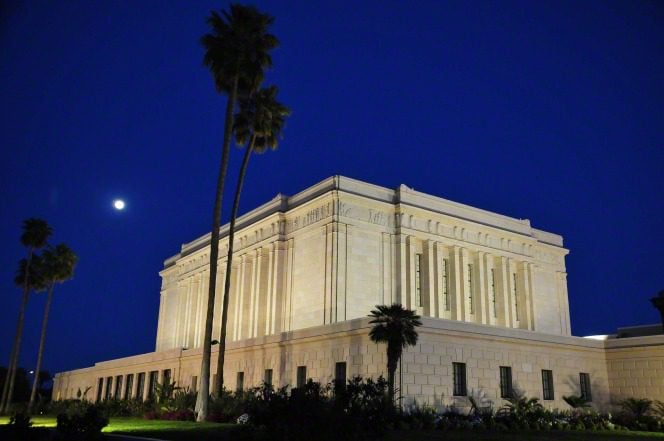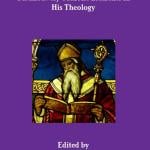
Surely the long-predicted demise of the Interpreter Foundation must be very near at hand. In the meanwhile, though, hopeful critics will be obliged to content themselves with its tantalizing death rattles. Here’s one of them, which appeared today: “Video and Audio Recordings are Now Available for the 2024 Temple on Mount Zion Conference”
Audio and video recordings of the presentations at the 2024 Temple on Mount Zion Conference are now available. They may be accessed at https://interpreterfoundation.org/conferences/2024-temple-on-mount-zion-conference/videos/. A playlist of the videos is also available the Interpreter YouTube channel at https://www.youtube.com/c/theinterpreterfoundation.
And here’s another, which also went up earlier today on the nearly moribund Interpreter website: The Temple: Symbols, Sermons, and Settings: “Consecration and Sacrilege in Early Rabbinic Judaism,” written by Avram R. Shannon:
Part of our book chapter reprint series, this article originally appeared in The Temple: Symbols, Sermons, and Settings, edited by Stephen D. Ricks and Jeffrey M. Bradshaw. For more information, go to https://interpreterfoundation.org/books/the-temple-symbols-sermons-and-settings/.
“One of the distinctive elements of the Restoration is the law of consecration. We often identify this law as one of the highest given as part of the Restoration. We find, however, that consecration is not just a modern concept but has its roots in the Lord’s covenant path in every dispensation, including the Sinai covenant and the law of Moses.”

You might find this of interest: “Heretic: A Horror Film About Latter-day Saint Sister Missionaries: Unofficial FAQ”
And this, sadly, is something that people ought to know about: “Nicaraguan Ortega regime bans priests from public hospitals: Opposition denounces dictatorship, says Ortega regime is determined to “continue a policy of indoctrination” to “exterminate” churches and “make Daniel Ortega and Rosario Murillo the only leaders in the country””
One more thing: While it’s popular in some circles right now to blame Latter-day Saints for the re-election to the presidency of Mr. Donald J. Trump and, thus motivated, to associate the Saints (both historically and today) with the Third Reich, it’s possible that some other Americans — non-Latter-day Saints, no less! — may also have voted for Mr. Trump. (For what little it’s worth, I did not.) And this article, written by the invaluable Mary Eberstadt, may help to account for at least some of those votes even without invoking Nazism: “Why Catholics Voted for Trump.”

I’ve just finished reading Stanford Carmack, “Book of Mormon Grammar and Translation,” BYU Studies 63/3 (2024): 49-74.
Early Modern English (EModE) is the form of the English language between approximately the late fifteenth century, or the Tudor period in the sixteenth century, and the English Restoration in 1660 or perhaps slightly later in the seventeenth century, at which point both written and spoken English begin to be familiar to speakers of the modern language. What sets Early Modern English apart from it predecessor, Middle English, is the so-called “Great Vowel Shift,” when all long vowel sounds in English changed to their current sounds.
Here, in order (I hope) to pique your curiosity, I share a few early passages from Dr. Carmack’s “Book of Mormon Grammar and Translation”:
This paper discusses some of the Book of Mormon’s nonstandard grammar, showing how in many cases it was not the kind of grammar that Joseph Smith would have been expected to produce, since it was neither his native usage nor a presumed biblically influenced English. In these contexts, if he had been in control of the wording of the text, it is highly likely that he would have expressed things differently. Quite a few examples are provided in support of this claim, along with additional matching examples found in early modern texts.
The purpose of this paper is to increase understanding of Book of Mormon grammar and to dispel some commonly held misunderstandings. It is time to go beyond earlier, unstudied views of the Book of Mormon’s nonstandard grammar—to improve on opinions that have been based on limited preparation, inadequate comparative study, and hasty analysis. In this paper, which is based on extensive preparation and work, I will show how various aspects of the Book of Mormon’s nonstandard grammatical usage support the view that Joseph Smith dictated a revealed text in 1829.
Among researchers who believe that the Book of Mormon was the result of revelation, the position of most has been that the original grammar of the Book of Mormon supports the view that Joseph Smith’s dictation in 1829 was the result of revealed ideas, not revealed words. Yet my careful study of the issue leads me to believe that it is precisely the opposite.
Many have believed that Joseph was the one responsible for the bad grammar3 of the original text, since there is plenty of bad grammar from the perspective of a prescriptive standard of American English usage in 1829, when he dictated the language. But it turns out that quite a few types of grammar—just as in the broader category of syntax—support the view that the Book of Mormon, as dictated, came to Joseph Smith as revealed words. (49-50)
The perspective offered in this paper is that several types of Book of Mormon nonstandard grammar should be viewed as early modern grammar. This perspective is based on the grammar itself and the broader domain of syntactic evidence. There are at least three distinct reasons to look to the early modern period for analogs or syntactic matches:
- The verbal system of the Book of Mormon fits early modern usage well; it does not fit late modern usage well.
- The original text has many archaic syntactic patterns that are non-biblical.
- The original text has non-biblical, archaic lexical usage. (51)
In short, the personal relative pronoun usage of the Book of Mormon
shows a pattern that occurred in the development of English during the
second half of the 1500s and the first decade of the 1600s, just before and
during Shakespeare’s time. (52)Because the Book of Mormon has a large amount of archaic syntax, there are many combinations of archaic syntax that aren’t found in either the King James Bible or pseudobiblical texts. Consequently, such combined linguistic evidence argues against Joseph Smith being the one who worded the text. (52)
The work of Royal Skousen and Stanford Carmack on apparent Early Modern English in the Book of Mormon is, to me, intensely interesting. And the direction in which their research has led them has been, to me, quite a surprise.

Dedicated enemies of theism who abhor and fear theists might want to avert their eyes from this appalling link, which was found in the Christopher Hitchens Memorial “How Religion Poisons Everything” File™: “Summary of 2024 Light the World News”











